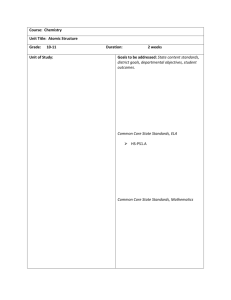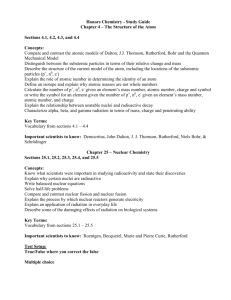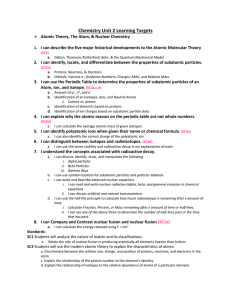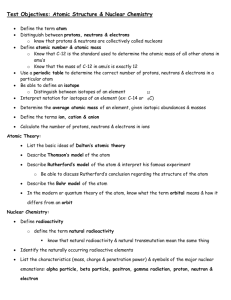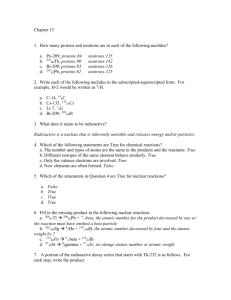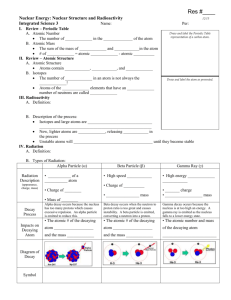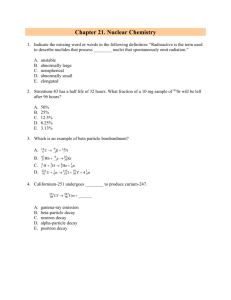Chemistry Review: Atomic Structure and Nuclear Chemistry
advertisement
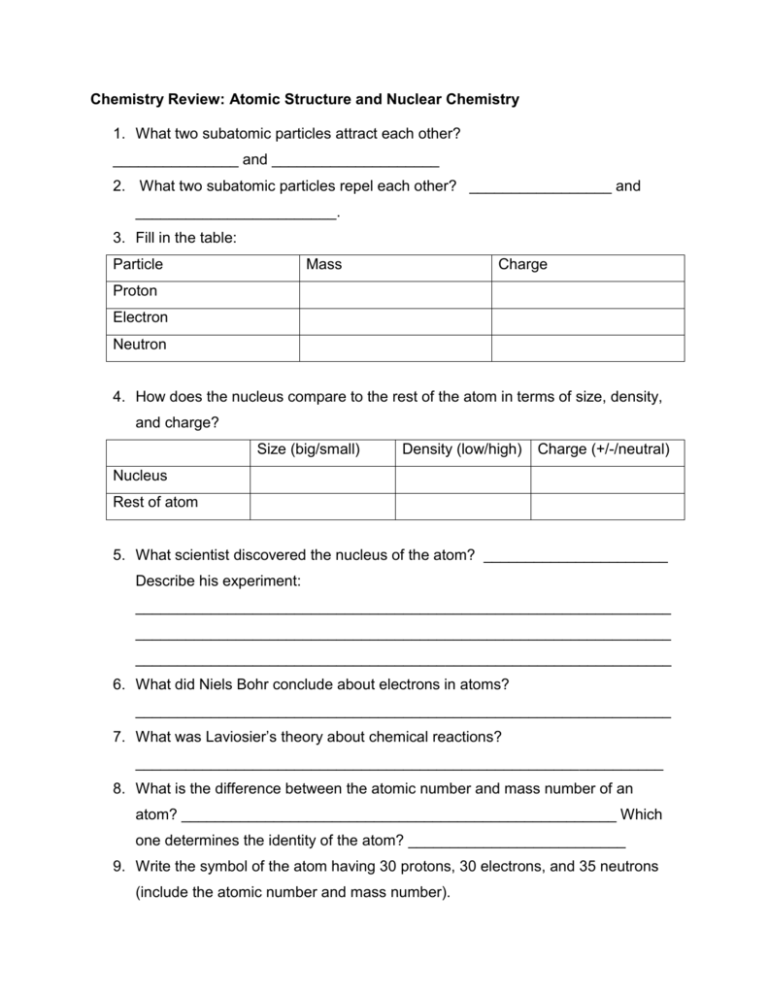
Chemistry Review: Atomic Structure and Nuclear Chemistry 1. What two subatomic particles attract each other? _______________ and ____________________ 2. What two subatomic particles repel each other? _________________ and ________________________. 3. Fill in the table: Particle Mass Charge Proton Electron Neutron 4. How does the nucleus compare to the rest of the atom in terms of size, density, and charge? Size (big/small) Density (low/high) Charge (+/-/neutral) Nucleus Rest of atom 5. What scientist discovered the nucleus of the atom? ______________________ Describe his experiment: ________________________________________________________________ ________________________________________________________________ ________________________________________________________________ 6. What did Niels Bohr conclude about electrons in atoms? ________________________________________________________________ 7. What was Laviosier’s theory about chemical reactions? _______________________________________________________________ 8. What is the difference between the atomic number and mass number of an atom? ____________________________________________________ Which one determines the identity of the atom? __________________________ 9. Write the symbol of the atom having 30 protons, 30 electrons, and 35 neutrons (include the atomic number and mass number). 10. Determine the number of protons, electrons, and neutrons in the following atoms: Element Protons Electrons Neutrons calcium-42 130Xe 54 Tin-119 11. There are three isotopes of carbon: carbon-12, carbon-13, and carbon-14. They all have the same number of which particle? _______________ They all have a different number of which subatomic particle? ________________. 12. Element X has three isotopes with the following mass numbers: 20, 21, and 22. The percent abundances are 90.51%, 0.27%, and 9.22% respectively. Calculate the average atomic mass and identify the element. 13. Element Y has two isotopes: Y-46, which has an abundance of 43%, and Y-47, which has an abundance of 57%. Calculate the average atomic mass. 14. Fill in the table: Radiation type Alpha Beta Gamma Charge Mass Penetrating Power 15. Write a nuclear decay equation for the alpha decay of uranium-238. ____________ _______________ + ________________ 16. Write a nuclear decay equation for the beta decay of cobalt-60. ____________ _______________ + ________________ 17. Write a nuclear decay equation for the gamma decay of americium-243. ____________ _______________ + ________________ 18. Identify two practical uses for radioactive isotopes: a. _____________________________________________________________ b. _____________________________________________________________ 19. What is nuclear fission? _______________________________________ What is nuclear fusion? ____________________________________________ Which one is used in a nuclear power plant? ______________ Which one fuels the sun? ____________________________ 20. The half-life of carbon-14 is 5730 years. How old is a bone that contains 1/8 of its original amount of carbon-14? 21. The half-life of iodine-131 is 8 hours. If a person ingests 50 g, how much is left in their body after: a. 8 hours? ________________ b. 16 hours? ________________ c. 24 hours? ________________ d. 32 hours? ________________

